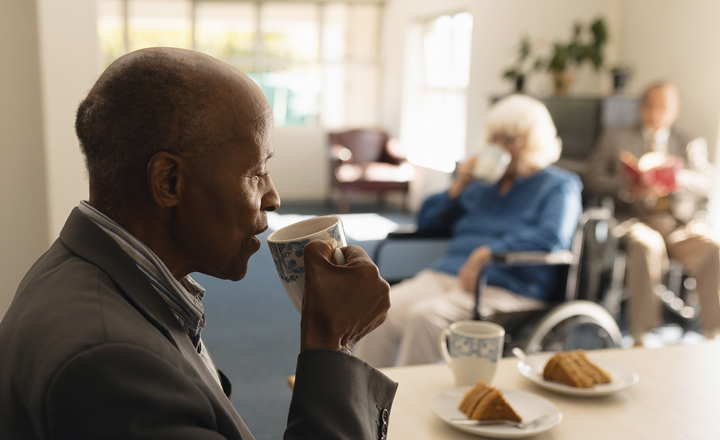How to create the best menus for care home residents
We know that staying healthy by following a good diet can have a positive effect on physical and mental wellbeing. As we get older, the importance of good nutrition remains, however, dietary and dining needs change and often become more complex with the onset of physical and/or mental health issues.
For those in care homes, issues such as loss of appetite, conditions such as dementia and physical conditions such as dysphagia, which makes swallowing difficult, can be real obstacles in ensuring residents receive the correct nutrients and liquid intake. Without this, elderly people are at higher risk of malnutrition. According to Age UK, 1 in 10 people over the age of 65 in the UK is malnourished or at risk of malnourishment. That’s more than one million people.
“1 in 10 people over the age of 65 in the UK is malnourished or at risk of malnourishment”
Put people at the heart of your menus
When thinking about nutrition in care homes, each resident has their own specific dietary and nutritional requirements, so it is important that each individual receives the right food to support their own needs and health. One size won’t fit all.
Sue Cawthray is the National Chair of the National Association of Care Catering (NACC). She explains: “In a care setting and in later life, the term ‘healthier eating habits’ should be used with caution. We prefer to talk about ‘eating for health’. For example, if an older person loses weight and it is unplanned, this is usually a result of under nutrition. A fortified diet that is dense in calories and nutrients can play a vital role in these circumstances to ensure enough nutrition is delivered in smaller portions. Now, in ‘general society’ increasing calorie intake is not a recognised form of ‘healthier eating’ whereas in a care setting it is.”
Communication is key
To ensure people eat well for their health, every mouthful of the food they are offered must be as nutritious and delicious as possible, in line with their needs. It must also be exciting and appealing to stimulate appetite and encourage eating. Sue says: “The key is to remove as many barriers to eating as possible. After all, an uneaten plate of food has no nutritional value whatsoever!
“Talk to the residents and their loved ones. Only by getting to know the individual can you get a true picture of their likes and dislikes when it comes to food and dining preferences, and any support that may be needed around mealtimes.”
“The key is to remove as many barriers to eating as possible. After all, an uneaten plate of food has no nutritional value whatsoever!”
Make mealtimes engaging
Healthy eating is about more than just food, it’s about the pleasure of eating too. Sharing mealtimes with others makes eating more enjoyable and has been shown to greatly benefit mental health.
Mealtimes at care home Treasure Homes are a social occasion. Managing Director David Gillespie says: “We try to make mealtimes fun and engaging for our residents wherever we can. They are involved in choosing what they eat, and we draw up the menus according to them. They also regularly bake puddings and treats together such as chocolate cornflake buns which they love, mostly because it reminds them of childhood.”

Getting the environment right for dementia residents is important
For residents with dementia, dining might not be an easy or pleasurable experience but small changes to the dining environment can help greatly. David says: “We have no set meal times for our residents with dementia, because they don’t really recognise mealtimes. Instead, we set out trollies of finger food during the day that they can help themselves to whenever they like.
“When our residents do sit down for a meal, though, we make sure the plate and tablecloth are different colours and the food is separated. This way, it helps them see the food more clearly and so encourages them to eat more.”
For recipe ideas and nutritional guides, look at Premier Foods’ care home hub.

